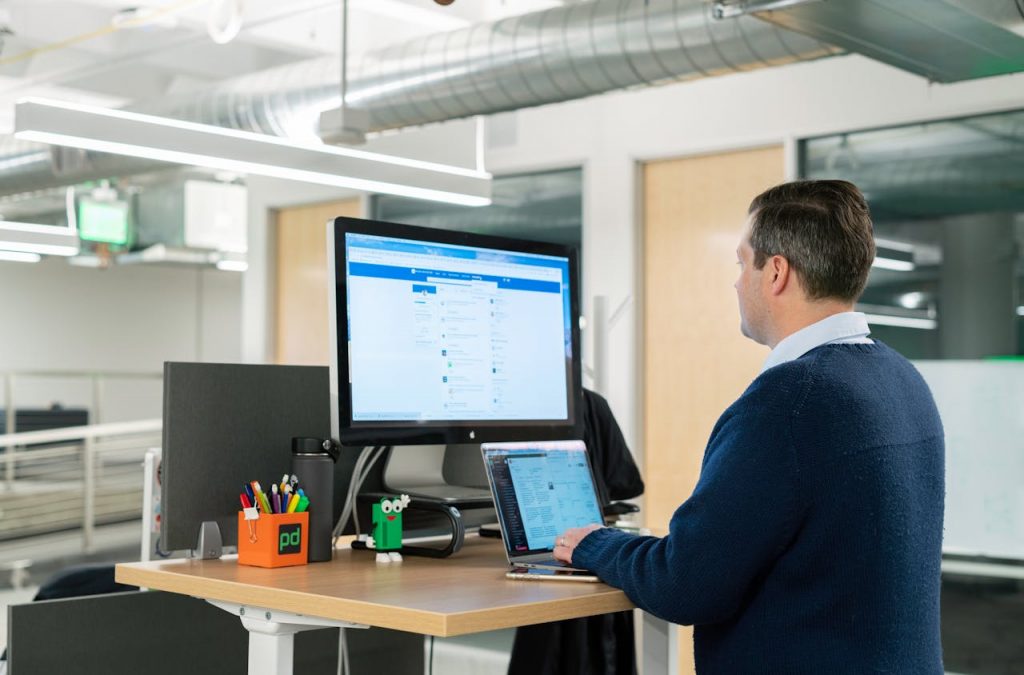How can a company break out of the Zoom paradigm without isolating its employees? Here are 3 alternatives communications channels.
From the beginning of the pandemic, a strong trend emerged on Google’s search engine. The « Zoom fatigue » keywords skyrocketed before plateauing a while after.
A recent Robert Half poll showed the same results : employees exhaust themselves on video conference applications, often due to an immediate supervisor who wants to maintain proximity within their teams.
1. Phone calls
Let’s start by looking at Stéphane Garneau’s proposal, commentator at the Samedi et rien d’autre show, with Joël Le Bigot. In his latest column, he reflected upon our habit to systematically choosing video conferences to communicate at work.
« In a lot of cases, phone calls would be enough, especially since it’s an image-less way of communication. The phone, whether we like it or not, is still in our comfort zone. We are used to it, our brain doesn’t have to fill the gaps when we talk on the phone, it has been part of our habits for quite a while now. Is it always necessary to be on Zoom, for anything and everything? I am not sure. We should raise this question. »
Phone calls seem especially recommended for « one-to-one » meetings, where we don’t need to deal with speaking turns.
2. Immersive meeting with virtual reality
If more traditional communications means, like phone calls, repel some, companies can still fight video conference fatigue by adopting an opposite strategy, by diving in a completely immersive virtual reality experience.
The MeetinVT startup created an application allowing users to meet in a virtual room. According to its observations, the app makes users’ attention span grow from 25%, when compared to a traditional video conference app.
Video conferencing can be highly impersonal and alienating, as the human interaction is stripped of its rewarding cues: feeling of presence and togetherness or visual cues such as eye contact and body language, Tomas Budrys, MeetinVR’s marketing manager, explained to Techradar.
In a MeetinVr virtual meeting, people can shake hands, sit next to a colleague, gesticulate and bring their attention to things present in the room.
3. A walk in a park
To avoid any contamination possibility between employees, some companies have already decided to extend telework until 2021, no matter the state of the pandemic and sanitary measures put in place.
This commitment is well intentioned : keeping employees safe from the virus. Yet, we could ask if a bit more flexibility wouldn’t be appropriate. Especially for employees who want to keep in-person meetings with their colleagues.
Guillaume Brunet, Digital Collective president, is among employers that chose a hybride formula, keeping some types of meetings in person, like annual reviews and integration meetings for instance.
Where the sanitary situation allows it, occasional outside in-person team meetings would be a great benefit for employees’ mental health… and would chase Zoom fatigue away!
Also to read on the matter :
How to Beat Zoom Fatigue—and Set Healthy Boundaries, on The Wired
How to Combat Zoom Fatigue, on HBR
Our Zoom series’ articles :
Zoom series [1-3] : fatigue confirmed
Zoom series [3-3] : how to add a “wow” factor to your meetings




